The Helgö Treasure: Bronze Buddha Statue, Coptic Scoop And A Crozier Depicting Biblical Tale Of Jonah
A. Sutherland - AncientPages.com - A remarkable collection of religious items from diverse lands was unearthed during archaeological excavations on the Swedish island of Helgö in 1954.
Located in Lake Mälaren (Malaren), west of Stockholm, the island was an important Viking trading and manufacturing center (6th-11th centuries AD. The first archaeological dig uncovered the remains of the early settlement, including a workshop area.
 Helgo Buddha Image credit: Swedish History Museum
Helgo Buddha Image credit: Swedish History Museum
An extensive collection of artifacts –Helgö Treasures - includes Arabic coins, Frankish glass, and metalwork across western Europe. Still, the most notable finds from these excavations included a small Buddha figurine from North India, the Coptic scoop from North Africa dating to the 6th century, and a crozier.
The figure of Buddha is slim, with crossed legs, and he sits on a throne designed as a double lotus flower. His right hand rests on the knee, in the left, which is slightly stretched.
The figurine, probably made in Kashmir, on the Pakistan/India border, had remnants of a narrow leather strap wrapped around the neck and left arm. Something that may indicate that it is stored or buried hanging as a talisman by merchant traders.
Historians hypothesize that the Buddha was carried over thousands of miles, up and down the rivers and across the vast steppes of Eurasia, before arriving at a Viking home in Sweden, perhaps after two or three hundred years of travel.
The Buddha has a silver urn on his forehead, symbolizing the third eye, while the ears have long lobes, symbolizing royalty. He sits in a meditative pose upon a double lotus throne, the latter representing purity, rebirth, and divinity.
The Helgö Crozier
The Helgö crozier is believed to be of Irish (or British) origin.
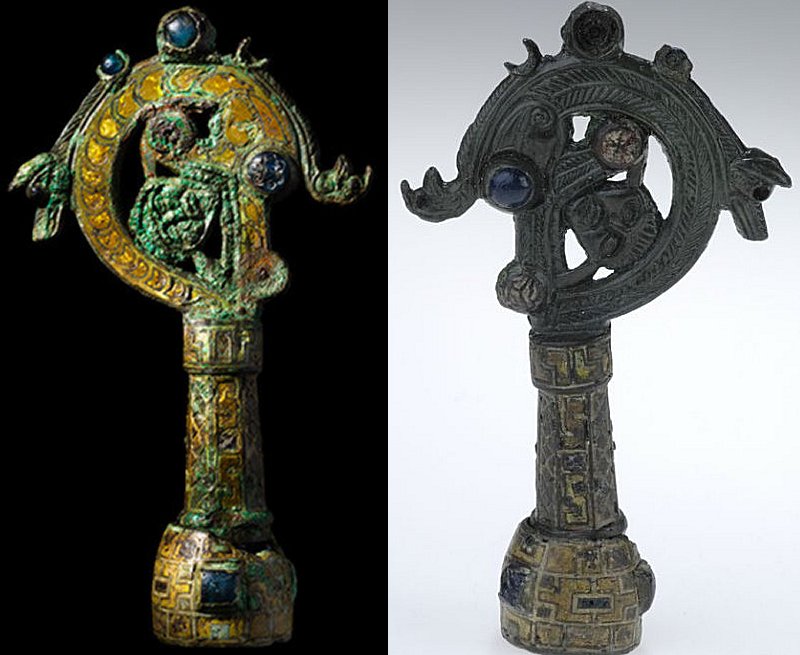 A crozier from the island of Helgö, Lake Mälaren, Sweden
A crozier from the island of Helgö, Lake Mälaren, Sweden
The artifact would have formed part of a bishop's staff carried by high-ranking Roman Catholic, Eastern Catholic and Oriental Orthodox, Anglican, and others. Dating about 700-800 AD, the crozier is made of bronze and is decorated with enamel, colored (primarily blue) glass inlays, and has a kind of decorative cut in geometric patterns.
The artifact depicts the biblical tale of Jonah trapped in the mouth of a whale or sea monster. The upper part of the crozier is formed as a winding dragon or a beast. A man's face is also visible between the jaws in the gap. The motif tells the story of Jonah, thrown up from the belly of the animal, symbolizing rebirth.
Although the motif is the same on both sides, the design differs. On one side, the dragon's body (or whalefish) has been given a herringbone-like pattern made in carving. On the other side, the body has been given inlays of small green and yellow enamel pieces.
Even Jonah looks different. He has a forehead and an open, gaping mouth on one side. On the other side, his hairstyle and mouth are different. It has been suggested that one side shows when Jonah is swallowed and the other when the creature vomits him out onto the shore. Why has the artist chosen to do so?
Bronze Coptic Scoop
The third object from the Helgo treasure is a bronze spoon that originates from North Africa, probably in the vicinity of modern-day Egypt. Decorated in minor punch marks, which define a Tree of Life symbol, the artifact was most likely used in ceremonies associated with the early Coptic church.
The scoop consists of a deep bowl and a flat, upright handle. Around the bowl's outer rim and over the handle are decorations of circles, filled triangles, and zick-zack lines.
The bowl's front portion, which is partially damaged, is adorned with plant ornamentation in the form of a so-called life tree.
Written by – A. Sutherland - AncientPages.com Senior Staff Writer
Updated on March 9, 2023
Copyright © AncientPages.com All rights reserved. This material may not be published, broadcast, rewritten or redistributed in whole or part without the express written permission of AncientPages.com
Expand for referencesMore From Ancient Pages
-
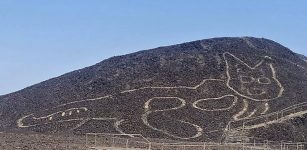 Giant 2,000-Year-Old Cat Geoglyph Discovered At Nazca In Peru
Archaeology | Oct 22, 2020
Giant 2,000-Year-Old Cat Geoglyph Discovered At Nazca In Peru
Archaeology | Oct 22, 2020 -
 The Prophecy Of The Rainbow Warriors And Future Of Planet Earth
Featured Stories | Aug 29, 2018
The Prophecy Of The Rainbow Warriors And Future Of Planet Earth
Featured Stories | Aug 29, 2018 -
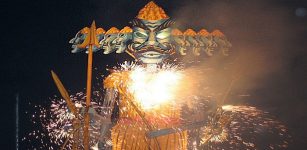 Ravana: Ten-Headed And Multi-Armed Demon King Of Lanka And Chief Antagonist In Epic Ramayana
Featured Stories | Oct 8, 2019
Ravana: Ten-Headed And Multi-Armed Demon King Of Lanka And Chief Antagonist In Epic Ramayana
Featured Stories | Oct 8, 2019 -
 Strange Story Of Tecumseh’s Comet, Black Sun Prophecy And New Madrid Earthquakes – The Biggest Earthquakes In American History
Ancient Mysteries | Nov 14, 2018
Strange Story Of Tecumseh’s Comet, Black Sun Prophecy And New Madrid Earthquakes – The Biggest Earthquakes In American History
Ancient Mysteries | Nov 14, 2018 -
 Why Was Pharaoh Khafre Almost Wiped Out From Historical Records?
Featured Stories | Feb 19, 2020
Why Was Pharaoh Khafre Almost Wiped Out From Historical Records?
Featured Stories | Feb 19, 2020 -
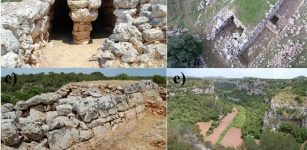 Eating And Social Habits Of People In The Balearic Islands 3,000 Years Ago – Reconstructed
Archaeology | Jan 18, 2023
Eating And Social Habits Of People In The Balearic Islands 3,000 Years Ago – Reconstructed
Archaeology | Jan 18, 2023 -
 Unexpected Substance Found In Ancient Maya City May Have Arrived Through Distant Trade
Archaeology | Dec 2, 2024
Unexpected Substance Found In Ancient Maya City May Have Arrived Through Distant Trade
Archaeology | Dec 2, 2024 -
 Why Are There No Unicorn Fossils In A Museum?
Archaeology | Mar 17, 2023
Why Are There No Unicorn Fossils In A Museum?
Archaeology | Mar 17, 2023 -
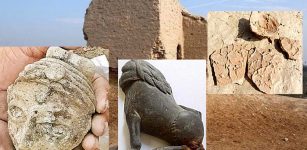 Buddhist ‘Dillu Roy’ Resembles Mohenjo Daro And Harappa And Now Unveils Its Ancient Secrets
Archaeology | Aug 25, 2020
Buddhist ‘Dillu Roy’ Resembles Mohenjo Daro And Harappa And Now Unveils Its Ancient Secrets
Archaeology | Aug 25, 2020 -
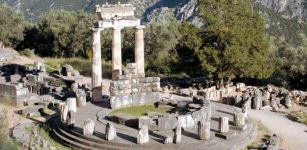 Ancient Greeks Built Sacred Temples On Earthquake Sites To Gain Spiritual Power
Archaeology | Sep 19, 2017
Ancient Greeks Built Sacred Temples On Earthquake Sites To Gain Spiritual Power
Archaeology | Sep 19, 2017 -
 First Time A Meteorite Killed A Person In Known History Revealed In Old Documents
Archaeology | Apr 29, 2020
First Time A Meteorite Killed A Person In Known History Revealed In Old Documents
Archaeology | Apr 29, 2020 -
 Satellite Images Reveal A Mysterious Ancient Site On A Remote Island Is Much Larger Than Previously Thought, Prompting New Questions
Archaeology | Nov 28, 2024
Satellite Images Reveal A Mysterious Ancient Site On A Remote Island Is Much Larger Than Previously Thought, Prompting New Questions
Archaeology | Nov 28, 2024 -
 Mysterious Ancient Human ‘Ghost’ Species Discovered With Help Of Saliva
Archaeology | Jul 25, 2017
Mysterious Ancient Human ‘Ghost’ Species Discovered With Help Of Saliva
Archaeology | Jul 25, 2017 -
 On This Day In History: 55 Delegates Convened To Write What Would Become The U.S. Constitution – On May 14, 1787
News | May 14, 2016
On This Day In History: 55 Delegates Convened To Write What Would Become The U.S. Constitution – On May 14, 1787
News | May 14, 2016 -
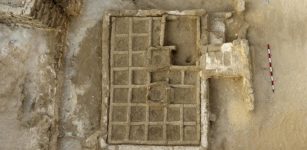 4,000-Year-Old Funerary Garden Found In Luxor, Egypt
Archaeology | May 9, 2017
4,000-Year-Old Funerary Garden Found In Luxor, Egypt
Archaeology | May 9, 2017 -
 Huldra: Seductive Female Creature Living In Forest Or Mountains In Norse Beliefs
Featured Stories | Feb 8, 2018
Huldra: Seductive Female Creature Living In Forest Or Mountains In Norse Beliefs
Featured Stories | Feb 8, 2018 -
 Edøy Discovery: Traces Of 1,000-Year-Old Ship Burial Detected In Norway
Archaeology | Nov 24, 2019
Edøy Discovery: Traces Of 1,000-Year-Old Ship Burial Detected In Norway
Archaeology | Nov 24, 2019 -
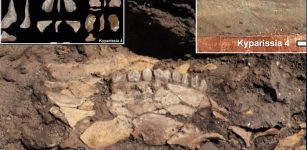 Greek Discovery Of Stone Tools In Megalopolis Area Pushes Back Greece’s Archaeological Record Up To 250,000 Years
Archaeology | Jun 2, 2023
Greek Discovery Of Stone Tools In Megalopolis Area Pushes Back Greece’s Archaeological Record Up To 250,000 Years
Archaeology | Jun 2, 2023 -
 Robert Fortune’s Dangerous Mission To Obtain Tea From The Chinese
Featured Stories | Feb 24, 2020
Robert Fortune’s Dangerous Mission To Obtain Tea From The Chinese
Featured Stories | Feb 24, 2020 -
 Maya Site With At Least 300 Buildings Some Of Which Are Over 8 Meters High – Discovered
Archaeology | Sep 16, 2022
Maya Site With At Least 300 Buildings Some Of Which Are Over 8 Meters High – Discovered
Archaeology | Sep 16, 2022

